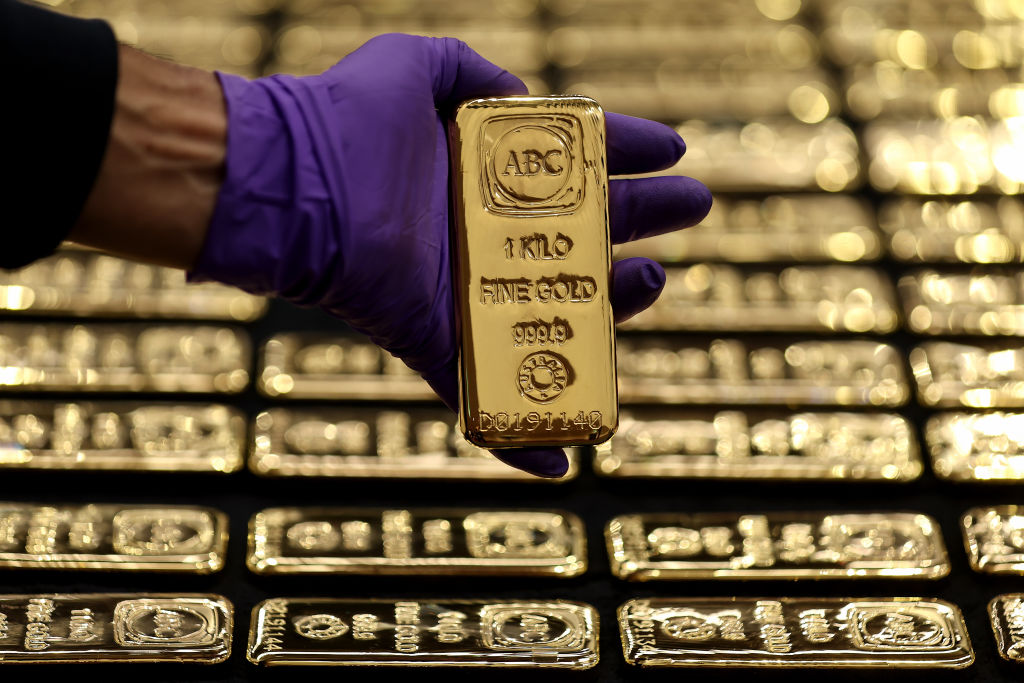Late last week, as central banks remained in a state of relative calm, the gold price continued to firm up. In the past, this price was firmly tied to inflation and interest rate expectations. Most gold price moves could be explained by the movement in yields on Treasury Inflation-Protected Securities (TIPS), which themselves are set in line with forward-looking inflation expectations and central bank monetary policy.
Why has the gold market changed beyond all recognition? A hint comes from the World Gold Council’s latest report, published at the end of last month. It notes that, in the first quarter of 2024, central bank demand for gold reached record highs, while the four countries with the highest demand were Turkey, China, India, and Kazakhstan.
Central banks are buying record amounts of gold as part of a long-term process of de-dollarisation. When Western countries seized Russian currency reserves in response to the invasion of Ukraine, they signalled that Western currency reserves were only trustworthy if these countries did not object to another country’s foreign policy. This has led to countries outside of the Western bloc seeking out more reliable ways to store their wealth. Gold has been a favoured alternative.
The process by which this de-dollarisation is taking place can be confusing for many. A casual reader of the business and financial press might have seen headlines which suggest that gold purchases are being undertaken due to the strength of the US dollar. But if the broader driver of the central bank gold purchases is de-dollarisation, shouldn’t the dollar fall rather than rise in value?
Not necessarily — or, more accurately, not in the short-term. For now, the US dollar’s value is set in line with the interest rate set by the Federal Reserve. The Fed is currently maintaining a high interest rate relative to most of the rest of the world, and so the dollar increases in value. Yet a stronger US currency makes American imports cheap and exports expensive, which tends to increase the trade deficit.
This is where we come to long-term drivers of the dollar’s value. The US finances its trade deficit by relying on other countries to purchase and hold dollar assets — from American stocks and bonds to simple US dollar reserves. But as we have seen, much of the rest of the world is now dumping dollars in favour of gold and other alternatives. This suggests that the supposedly strong dollar is living on borrowed time.
It also suggests that running a strong dollar policy — and hence a large trade deficit — by maintaining high interest rates in the United States is increasingly risky. At some point — perhaps amid a recession and a financial crisis — the value of the currency might drop, pushing up inflation and dragging down American living standards.
All this action has been great for longtime champions of precious metals. In the past, gold bugs, as they are sometimes called, were scorned by investment professionals. Their pronouncements of the imminent collapse of the US dollar were greeted with scepticism, and famous investors chastised those who bought gold when they could be buying stocks and bonds. “Gold gets dug out of the ground in Africa, or someplace,” Warren Buffet once quipped. “Then we melt it down, dig another hole, bury it again and pay people to stand around guarding it. It has no utility. Anyone watching from Mars would be scratching their head.”
But with the gold price now trading above $2,300 — record highs by any standard — and the process of de-dollarisation now being accepted as real by most investment analysts, it looks like the gold bugs are having the last laugh. Perhaps they heralded the fall of the dollar too early but, ultimately, their intuition that the US could not maintain financial hegemony forever was a sound one.











Join the discussion
Join like minded readers that support our journalism by becoming a paid subscriber
To join the discussion in the comments, become a paid subscriber.
Join like minded readers that support our journalism, read unlimited articles and enjoy other subscriber-only benefits.
Subscribe